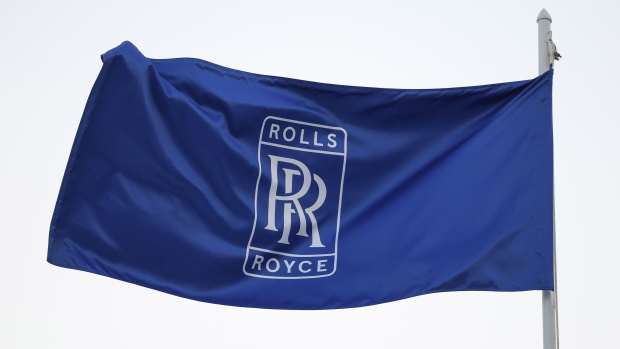Feb 22, 2024
Rolls Royce Profit Grows, Sees Progress Toward Cash Flow in 2024
, Bloomberg News

(Bloomberg) -- Rolls-Royce Holdings Plc said it’s making progress toward its medium-term targets as long-haul flying soars past pre-pandemic levels and efforts to cut costs and boost profitability under its new leadership bear fruit.
Shares of the enginemaker surged as much as 9.4% on Thursday after the company reported higher-than-expected profit in 2023 and promised to resume dividend payouts once it achieved an investment-grade credit rating.
“Our contracts are getting more profitable,” said Chief Executive Officer Tufan Erginbilgic on an earnings call. “A lot more benefit will come in the future, making the company more efficient and competitive.”
Rolls-Royce expects long-haul flying in 2024 to exceed 2019 levels, generating higher operating and maintenance revenues, while its defense business benefits from governments ramping up spending amid a growing number of conflicts across the world.
Erginbilgic took over in 2023 and promised to revamp the company by slashing costs and focusing on profitability instead of growth. The CEO said the company will be more than half way toward meeting its midterm targets by year end, and expects to achieve an underlying operating profit of between £1.7 and £2 billion in 2024 with free cash flow of £1.7 billion to £1.9 billion.
In November, Rolls-Royce set mid-term financial targets including operating profit of as much as £2.8 billion and free cash flow of as much as £3.1 billion by 2027. The company targets an operating margin of 13-15%, as well as a return on capital of 16-18% over the same period.
Shares were up 8.7% at 10:38 a.m. in London. Already Europe’s best-performing stock last year, the shares have gained 19% this year, putting the manufacturer among the highest-returning companies on the FTSE 100 so far in 2024. Rolls-Royce is currently rated BB+ at Standard & Poors, one notch below investment grade.
Still, Rolls-Royce cautioned that margins remain under pressure from strained supply chains. The aerospace industry has struggled to adjust to the rebound in demand for flying after the pandemic, when they were forced to cut staffing and costs to survive.
Erginbilgic expects supply issues to continue this year, and said the company is taking steps to mitigate the challenges by stationing its own staff at suppliers, consolidating procurement at the group level and is looking at dual-supply or even moving supply to more credible players.
Under Erginbilgic, Rolls-Royce has taken a tougher line on pricing and has said the company will focus on profitability instead of offering steep discounts to win business. That’s led to some missed sales opportunities — and tension with partner Airbus SE, which relies exclusively on the company’s turbines for its widebody jets.
Large engine orders were the highest in more than 15 years, with major orders coming from carriers including Air India and Turkish Airlines. Large engine flying hours in civil aerospace recovered to 88% of 2019 levels, up from 65% in 2022.
(Updates with stock performance from first paragraph.)
©2024 Bloomberg L.P.





